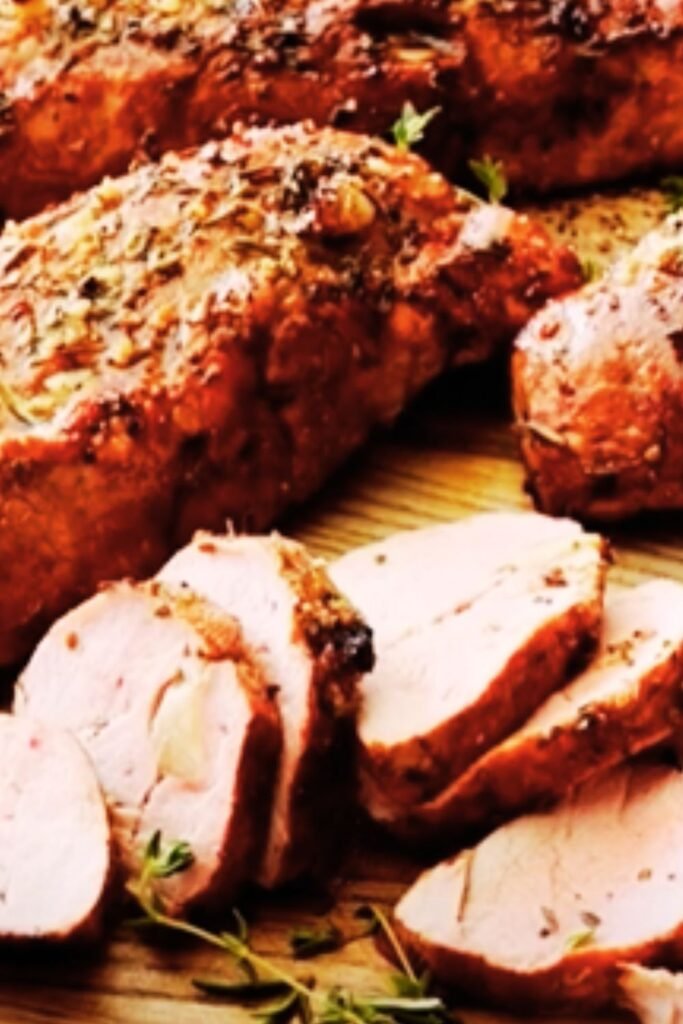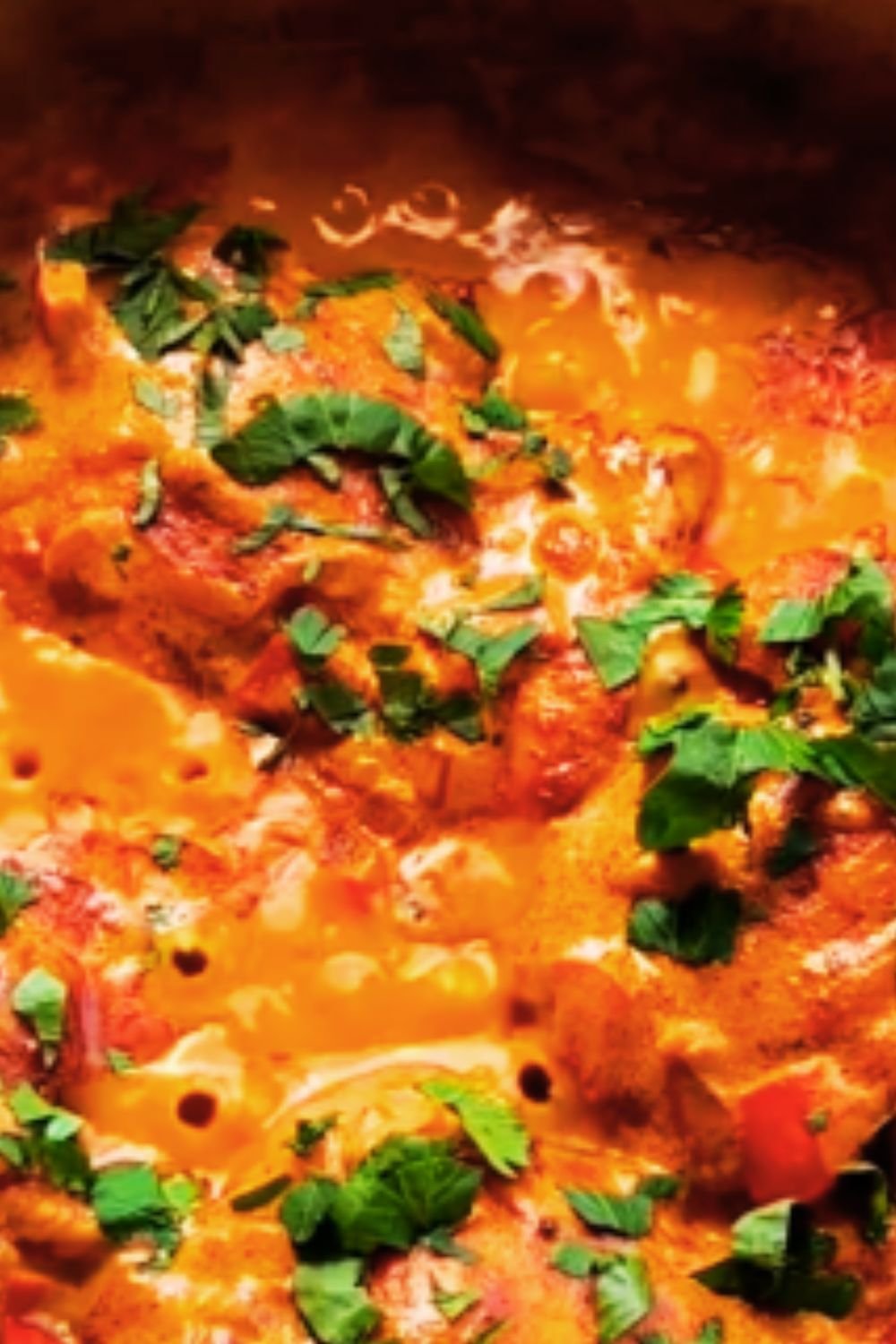There’s something magical about the combination of rosemary and orange that transforms an ordinary pork tenderloin into something extraordinary. I’ve been perfecting this recipe for years, and I’m thrilled to share my version of this delectable dish with you. The bright citrus notes paired with the earthy, pine-like flavor of fresh rosemary creates a harmony of flavors that will impress even the most discerning dinner guests.
Why You’ll Love This Recipe
When I first created this dish, I was looking for something special but not overly complicated for a Sunday family dinner. This rosemary orange glazed pork tenderloin has since become my go-to recipe when I want to create something impressive without spending hours in the kitchen.
The pork tenderloin is one of the most tender cuts of meat when cooked properly, and the citrus-herb glaze creates a beautiful caramelized exterior while helping to keep the meat juicy and flavorful. The best part? It only takes about 35 minutes of active cooking time, leaving you free to prepare sides or spend time with your guests.
Ingredients
For the pork:
- 2 pork tenderloins (about 1-1.5 pounds each)
- 2 tablespoons olive oil
- 4 cloves garlic, minced
- 2 tablespoons fresh rosemary, finely chopped
- 1 tablespoon orange zest (from about 2 oranges)
- 1 teaspoon kosher salt
- 1/2 teaspoon freshly ground black pepper
- 1/4 teaspoon crushed red pepper flakes (optional)
For the orange glaze:
- 1 cup fresh orange juice (from about 3-4 oranges)
- 2 tablespoons honey
- 1 tablespoon Dijon mustard
- 2 teaspoons fresh rosemary, finely chopped
- 2 tablespoons unsalted butter
- 1/4 teaspoon kosher salt
For garnish:
- Fresh rosemary sprigs
- Orange slices
- 1 tablespoon fresh parsley, chopped (optional)
Equipment Needed
- Roasting pan or large oven-safe skillet
- Meat thermometer
- Small saucepan
- Cutting board
- Sharp knife
- Measuring spoons and cups
- Citrus zester or microplane
- Citrus juicer (optional)
- Kitchen twine (optional, for tying the tenderloins)
Preparation Time
- Prep time: 15 minutes
- Marinating time: 1-4 hours (optional but recommended)
- Cook time: 25-30 minutes
- Resting time: 10 minutes
- Total time: Approximately 2 hours (including marinating)
Step-by-Step Instructions
Preparing the Pork Tenderloin
- Remove the pork tenderloins from the refrigerator about 30 minutes before cooking to allow them to come to room temperature.
- Trim any silver skin or excess fat from the tenderloins. The silver skin is a thin, silvery membrane that won’t break down during cooking and can make the meat tough.
- In a small bowl, combine the olive oil, minced garlic, chopped rosemary, orange zest, kosher salt, black pepper, and red pepper flakes (if using).
- Pat the tenderloins dry with paper towels, then rub the herb mixture all over the meat, making sure to coat all sides evenly.
- If time allows, place the seasoned tenderloins in a resealable plastic bag or covered container and refrigerate for 1-4 hours to marinate. If you’re short on time, you can proceed directly to cooking, but the flavor won’t be quite as developed.

Roasting the Pork Tenderloin
- Preheat your oven to 400°F (200°C).
- Heat a large oven-safe skillet over medium-high heat. Add 1 tablespoon of olive oil.
- Once the oil is hot and shimmering, add the tenderloins to the pan. Sear on all sides until nicely browned, about 2-3 minutes per side. This step is crucial for developing flavor and sealing in juices.
- Transfer the skillet with the tenderloins to the preheated oven. If you don’t have an oven-safe skillet, transfer the seared meat to a roasting pan.
- Roast for approximately 15-20 minutes, or until the internal temperature reaches 145°F (63°C) for medium. Use a meat thermometer inserted into the thickest part of the tenderloin for accuracy.
- While the pork is roasting, prepare the orange glaze.
Preparing the Orange Glaze
- In a small saucepan, combine the fresh orange juice, honey, and Dijon mustard. Bring to a simmer over medium heat.
- Reduce the heat to medium-low and continue to simmer until the mixture has reduced by about half and has a slightly syrupy consistency, approximately 10-15 minutes.
- Remove from heat and stir in the chopped rosemary, butter, and salt until the butter is melted and fully incorporated. The butter adds richness and helps the glaze cling to the meat.
- Set aside and keep warm until ready to use.
Finishing and Serving
- Once the pork has reached the proper internal temperature, remove it from the oven and transfer to a cutting board.
- Brush generously with some of the orange glaze, reserving the remaining glaze for serving.
- Tent the pork loosely with foil and let it rest for 10 minutes. This resting period allows the juices to redistribute throughout the meat, ensuring a tender and juicy result.
- After resting, slice the tenderloin into medallions, about 3/4 to 1 inch thick.
- Arrange the slices on a serving platter, drizzle with the remaining glaze, and garnish with fresh rosemary sprigs, orange slices, and chopped parsley if desired.

Nutrition Information
| Nutrient | Amount per Serving* |
|---|---|
| Calories | 290 |
| Total Fat | 12g |
| Saturated Fat | 4g |
| Cholesterol | 90mg |
| Sodium | 420mg |
| Total Carbohydrates | 11g |
| Dietary Fiber | 0g |
| Sugars | 9g |
| Protein | 35g |
| Vitamin C | 25% DV |
| Iron | 10% DV |
| Potassium | 15% DV |
*Based on 6 servings from 2 tenderloins. Values are approximate.
Serving Suggestions
This rosemary orange glazed pork tenderloin pairs beautifully with a variety of side dishes. Here are some of my favorite combinations:
- Creamy garlic mashed potatoes and roasted asparagus
- Wild rice pilaf with toasted almonds and sautéed green beans
- Roasted root vegetables (carrots, parsnips, and sweet potatoes)
- Quinoa with dried cranberries and roasted Brussels sprouts
- Cauliflower puree and honey-glazed carrots
For a complete meal, consider starting with a light salad dressed with a citrus vinaigrette to complement the orange flavors in the main dish. A sparkling water with a splash of orange juice and a sprig of rosemary makes a refreshing non-alcoholic beverage option.

Make-Ahead and Storage Tips
Make-Ahead Options:
- The herb and orange zest rub can be prepared up to 24 hours in advance and stored in an airtight container in the refrigerator.
- The tenderloins can be seasoned with the rub up to 24 hours before cooking and kept in the refrigerator. This extra marinating time will actually enhance the flavor.
- The orange glaze can be made up to 3 days ahead and stored in an airtight container in the refrigerator. Gently reheat before using.
Storage and Leftovers:
- Store leftover pork tenderloin in an airtight container in the refrigerator for up to 3 days.
- For best results when reheating, slice the cold pork tenderloin into medallions, place in a baking dish, drizzle with a bit of chicken broth or leftover glaze, cover with foil, and heat in a 325°F (165°C) oven until just warmed through, about 10-15 minutes. Avoid overheating as this will dry out the meat.
- Leftover pork tenderloin also makes excellent sandwiches, especially when paired with arugula and a thin spread of Dijon mustard on crusty bread.
- You can freeze cooked pork tenderloin for up to 2 months. Wrap it tightly in plastic wrap, then in aluminum foil or place in a freezer-safe container.
Recipe Variations
Herb Variations:
- Substitute the rosemary with fresh thyme or sage for a different flavor profile.
- Add 1 tablespoon of finely chopped fresh lavender to the herb mixture for a subtle floral note that pairs wonderfully with the orange.
Citrus Variations:
- Replace the orange with blood oranges when in season for a visually stunning and slightly more complex flavor.
- Try a combination of orange and lemon for a more tangy profile.
- Substitute clementines or tangerines for a sweeter, more subtle citrus flavor.
Spice Variations:
- Add 1/4 teaspoon of ground cinnamon and a pinch of cloves to the glaze for a warm, spiced version perfect for fall and winter months.
- Include 1 tablespoon of grated fresh ginger in the marinade for a zesty kick.
- For a hint of heat, add 1/2 teaspoon of chipotle powder to the herb rub.
Pro Tips for Perfect Pork Tenderloin
- Temperature matters: For the juiciest result, cook pork tenderloin to an internal temperature of 145°F (63°C) followed by a 10-minute rest. The meat will continue cooking slightly during this time, reaching the perfect doneness.
- Even thickness: If one end of your tenderloin is significantly thinner than the other, fold it under and secure with kitchen twine to ensure even cooking.
- Don’t skip the sear: Searing the meat before roasting creates a flavorful crust and helps seal in juices.
- Resting is non-negotiable: Always let the meat rest after cooking. This allows the juices to redistribute throughout the meat instead of running out when you slice it.
- Slice against the grain: For the most tender bites, always cut perpendicular to the direction of the meat fibers.
- Fresh herbs make a difference: While dried herbs can work in a pinch, fresh rosemary has a vibrant flavor that really shines in this recipe.
- Zest before juicing: Always zest your oranges before juicing them. It’s much easier than trying to zest a squeezed orange half!
Frequently Asked Questions
Q: Can I use pork loin instead of tenderloin for this recipe?
A: Yes, you can use pork loin, but you’ll need to adjust the cooking time significantly. Pork loin is a larger, thicker cut that requires about 20-25 minutes per pound when roasted at 350°F (175°C). Use a meat thermometer to ensure it reaches 145°F (63°C) internal temperature.
Q: I don’t have fresh rosemary. Can I use dried?
A: Yes, you can substitute dried rosemary, but use only one-third of the amount called for fresh (about 2 teaspoons dried for the entire recipe). Dried herbs are more potent than fresh. For the best flavor, crush the dried rosemary between your fingers before adding it to release the essential oils.
Q: How can I tell if my pork tenderloin is done without a meat thermometer?
A: While a meat thermometer is the most reliable method, you can also make a small cut into the thickest part of the tenderloin. Properly cooked pork will be slightly pink in the center (this is safe according to USDA guidelines) and the juices should run clear. However, I strongly recommend investing in an inexpensive meat thermometer for consistent results.
Q: My glaze isn’t thickening. What am I doing wrong?
A: The glaze needs to simmer until reduced by about half. This can take longer depending on your stove and the width of your saucepan. Be patient and continue simmering. If you’re still having trouble, you can add 1 teaspoon of cornstarch mixed with 1 tablespoon of cold water to the simmering glaze and stir until thickened.
Q: Can I make this recipe in a slow cooker?
A: While this recipe is best suited for roasting to get the caramelized exterior, you can adapt it for a slow cooker. Sear the seasoned tenderloins as directed, then place in a slow cooker. Mix the glaze ingredients (except butter) and pour over the meat. Cook on low for 2-3 hours or until the internal temperature reaches 145°F (63°C). Remove the meat, transfer the liquid to a saucepan, add the butter, and reduce until slightly thickened before serving.
Q: Is this recipe gluten-free?
A: Yes, all the ingredients in this recipe are naturally gluten-free. However, always check your specific brands of Dijon mustard and other packaged ingredients to ensure they don’t contain hidden gluten or are processed in facilities with gluten-containing products if you have celiac disease or severe gluten sensitivity.
Q: Can I grill this pork tenderloin instead of roasting it?
A: Absolutely! Prepare the tenderloin as directed, then grill over medium heat (about 350-400°F or 175-200°C) for about 15-20 minutes, turning occasionally, until the internal temperature reaches 145°F (63°C). Brush with the glaze during the last 5 minutes of grilling.
A Personal Note
I first created this rosemary orange glazed pork tenderloin for a special holiday dinner with friends who had varying dietary preferences. It was a hit with everyone, and I’ve been perfecting it ever since. What I love most about this recipe is how the bright citrus flavors balance the rich pork and earthy rosemary.
The aroma that fills your kitchen as this dish cooks is truly intoxicating – the sweet scent of orange mingling with the piney notes of rosemary creates an atmosphere of warmth and welcome that’s perfect for both special occasions and elevated weeknight dinners.
Don’t be surprised if this becomes your new favorite way to prepare pork tenderloin. The combination of flavors is timeless, the preparation is straightforward, and the results are consistently impressive. Whether you’re cooking for family or entertaining guests, this dish strikes the perfect balance between elegant and approachable.
I hope you enjoy making and sharing this recipe as much as I do. Happy cooking!


